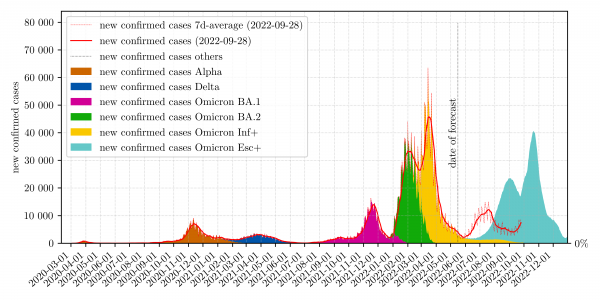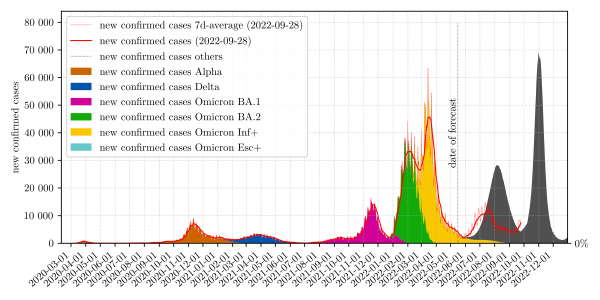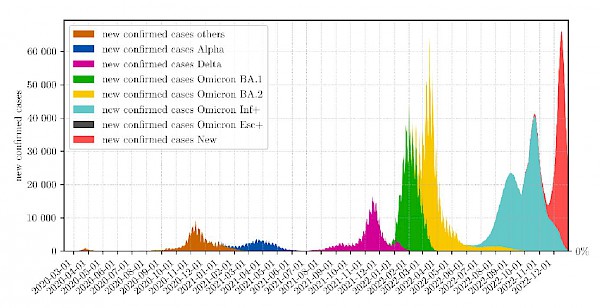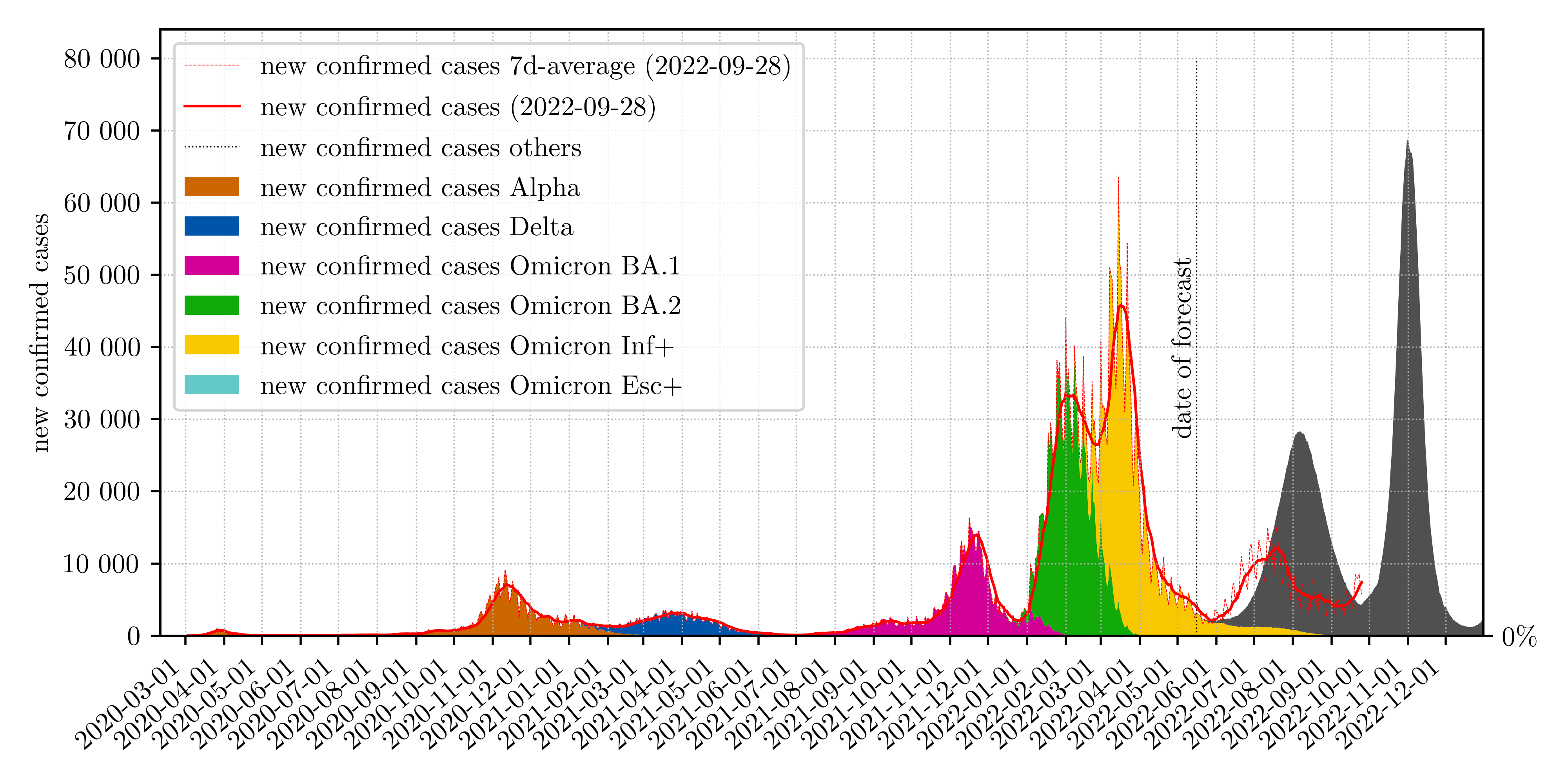Current Development COVID-19 & Updated Fall Scenarios from May/June 2022
Note: This is an automated translation (using DeepL) of the original German article.
Current evaluation of development
The current increase in the number of cases of the disease is developing system-dynamically, as expected in the autumn scenarios calculated in spring for the Federal Ministry. For evaluation purposes - also in the context of our research work for the province of Upper Austria - two scenarios (another one has become obsolete as variant BA.2 has been displaced in the meantime) were compared with the actual development (see figures below) and we try to show which deviations exist, why they occur and whether fundamental statements have changed as a result.


At first glance, the measured trend (red curve) differs in terms of magnitude. This difference may either result from dynamics (that is, that fewer cases have actually occurred). More likely, however, the relevant reason is the change in testing behavior leading to a higher number of unreported cases. Another difference is a somewhat “earlier dynamic”.
From the model’s point of view, this results on the one hand from the reduction of restraining measures in public spaces, and on the other hand from the earlier temperature change in September compared to recent years (and the resulting shift of contacts from outdoor to indoor spaces, as well as changed leisure activities), which cannot be predicted exactly. The shift of 1-2 weeks, or the lower level due to the change in testing strategy, does not change the basic behavior, especially with respect to further development. For resource planning e.g. in hospitals, the hospitalization rates were adjusted accordingly.
The scenarios show the potential of the current wave. We currently assume a detection rate reduced by about 50% compared to spring 2022. Like the summer wave, the current wave is dominated by the BA.5 variant, so a certain proportion of the population is already (temporarily) immunized against this variant. Due to these two circumstances, changed testing behavior and people already infected with BA.5, the peak of reported new infections, according to the May scenario calculations, would be around 20 to 35 thousand (instead of 40-70 thousand) and is expected quite soon. Thus, based purely on positive tests, the wave is expected to be lower than the Omikron BA.2 wave in April.
Internationally, some candidates, such as BA.2.75.2, are currently considered Variants of Concern (VoCs). According to the variant report, this has also already been detected in Austria, but still with a very small proportion. An adoption of this variant within the next weeks is therefore not yet to be expected, but it could lead to another wave in winter, similar to the one observed during the transition from BA.1 to BA.2 in spring. This scenario was also included in our June analysis (see Figure 3).

The question of how to deal with the risk of long covid disease and other aspects or other important health system aspects are not addressed here and are a political question. However, an important statement of the evaluation is that with restrictive measures a system dynamic as modeled here (and as we now measure it in reality) cannot be reasonably prevented in principle. However, measures such as masks, for example, do of course very much flatten the dynamics that arise and are particularly recommended if they are worn voluntarily. The May 2022 simulation underscores the importance of a sustainable and coordinated strategy, as proposed in the Variant Management Plan (VMP) proposed by GECKO and adopted by the federal government. This should include defining and communicating which scenarios are current and when. Important aspects include evidence-based vaccination strategy, preventive drug delivery for special groups such as immunocompromised people, post-infection therapy, and early resource planning in hospitals and other health care facilities (specifically including staff absenteeism) that can mitigate the consequences of the current wave with evidence-based effort and minimal constraints.
Remark:
For details regarding the modelling and simulation of COVID-19 also see Scenario Modeling in Europe - the European Scenario Hub of the ECDC.



